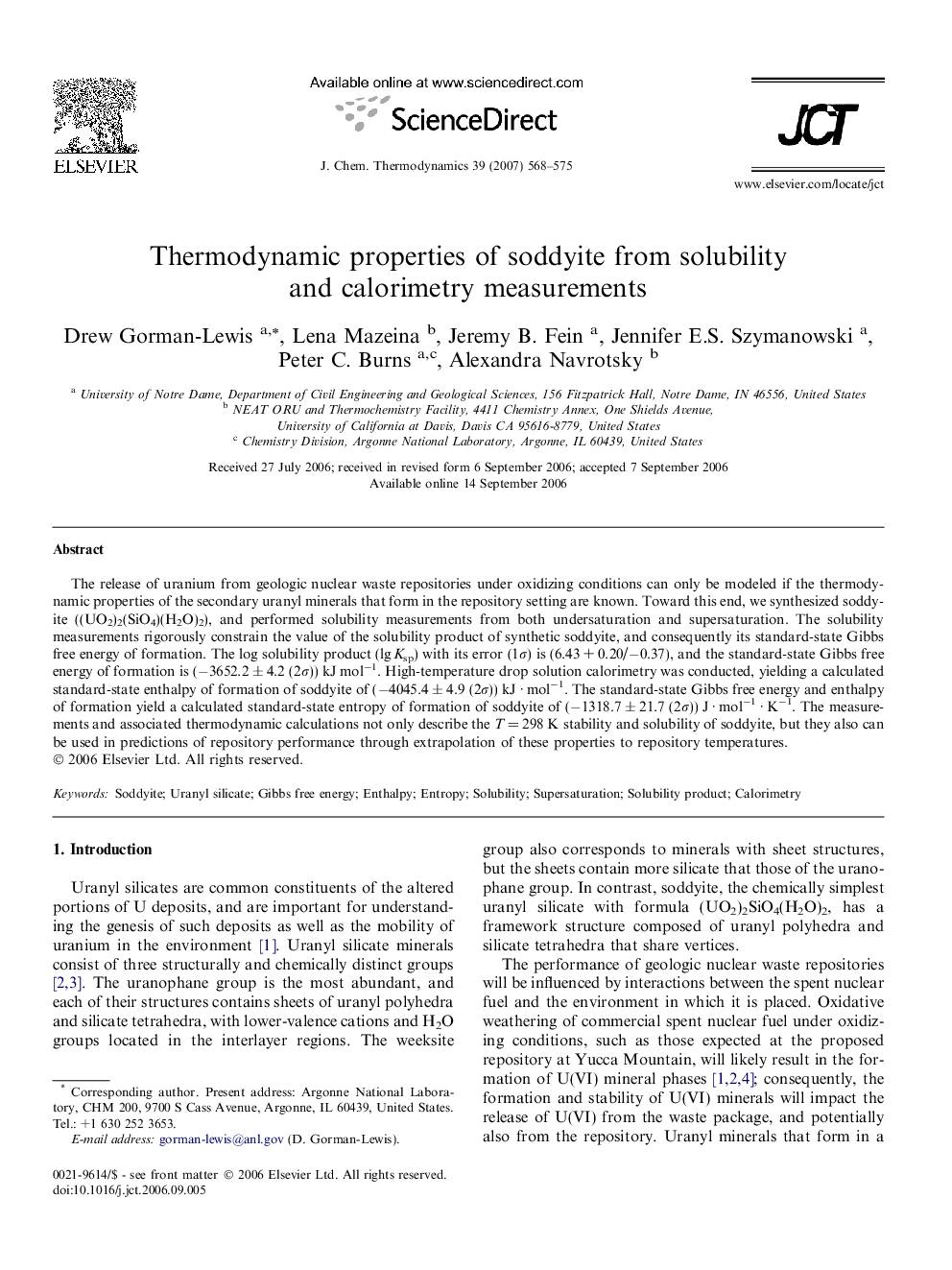| Article ID | Journal | Published Year | Pages | File Type |
|---|---|---|---|---|
| 217363 | The Journal of Chemical Thermodynamics | 2007 | 8 Pages |
The release of uranium from geologic nuclear waste repositories under oxidizing conditions can only be modeled if the thermodynamic properties of the secondary uranyl minerals that form in the repository setting are known. Toward this end, we synthesized soddyite ((UO2)2(SiO4)(H2O)2), and performed solubility measurements from both undersaturation and supersaturation. The solubility measurements rigorously constrain the value of the solubility product of synthetic soddyite, and consequently its standard-state Gibbs free energy of formation. The log solubility product (lg Ksp) with its error (1σ) is (6.43 + 0.20/−0.37), and the standard-state Gibbs free energy of formation is (−3652.2 ± 4.2 (2σ)) kJ mol−1. High-temperature drop solution calorimetry was conducted, yielding a calculated standard-state enthalpy of formation of soddyite of (−4045.4 ± 4.9 (2σ)) kJ · mol−1. The standard-state Gibbs free energy and enthalpy of formation yield a calculated standard-state entropy of formation of soddyite of (−1318.7 ± 21.7 (2σ)) J · mol−1 · K−1. The measurements and associated thermodynamic calculations not only describe the T = 298 K stability and solubility of soddyite, but they also can be used in predictions of repository performance through extrapolation of these properties to repository temperatures.
